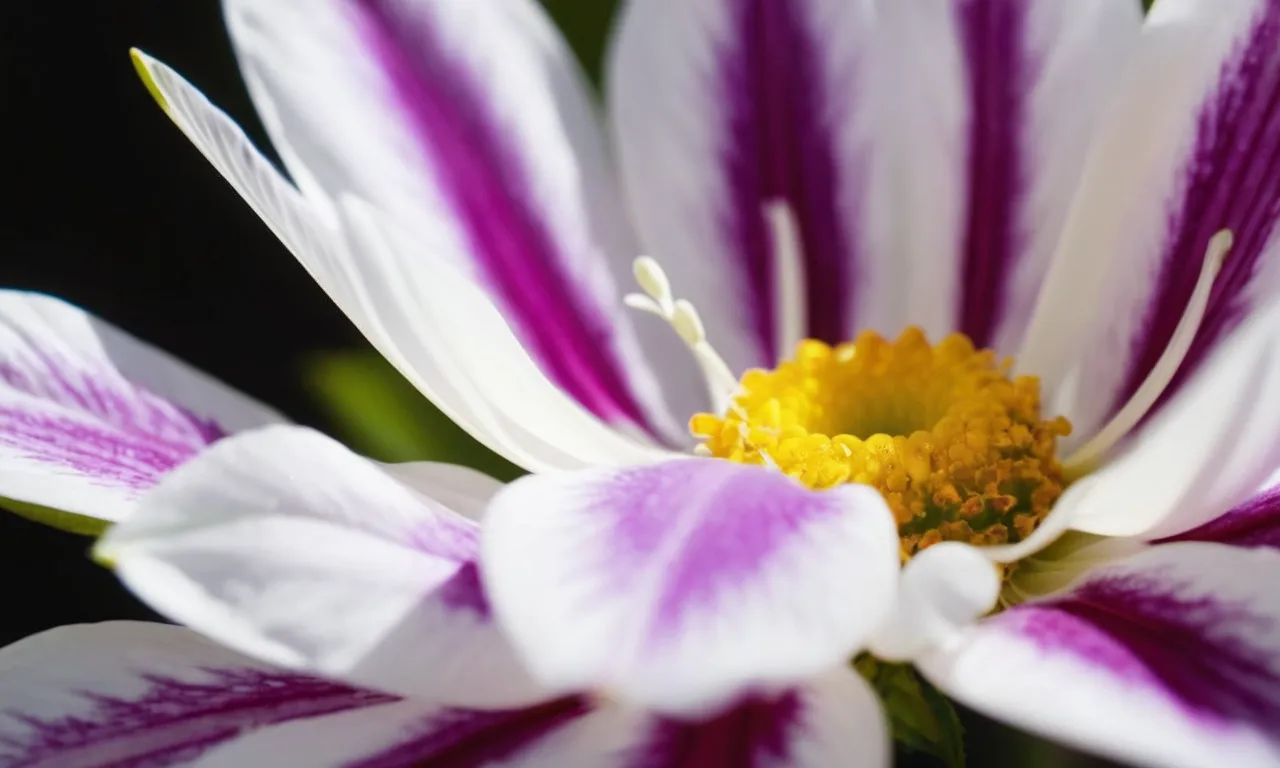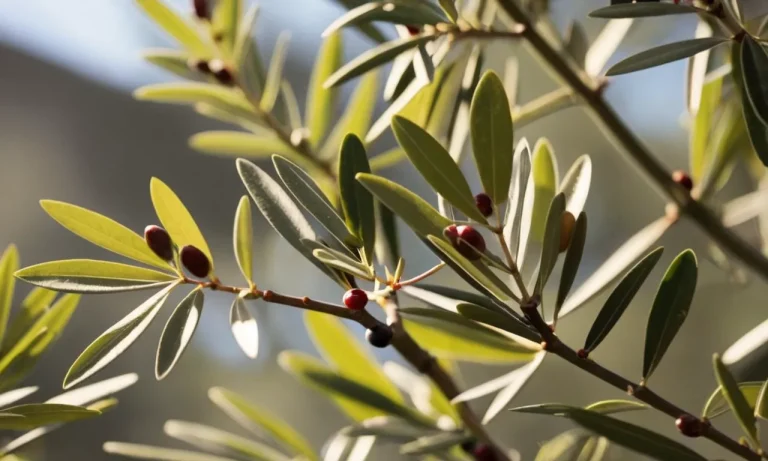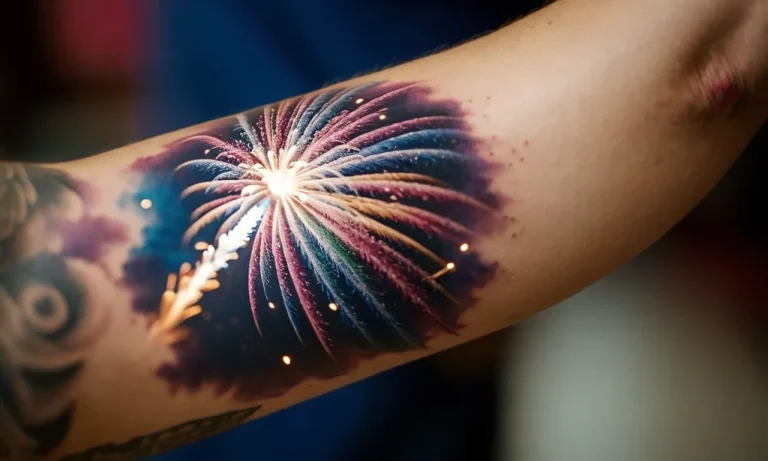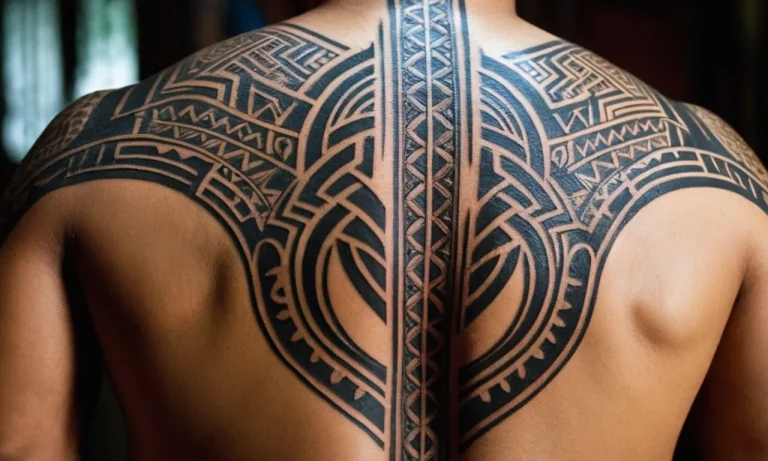The Profound Symbolism Of Purple And White: Exploring Their Meanings And Significance
In the vast tapestry of colors that adorn our world, few hues hold as much intrigue and symbolism as the regal purple and the pristine white. These shades have captivated humanity for centuries, weaving their way into our cultures, religions, and artistic expressions.
If you’re short on time, here’s a quick answer to your question: Purple is often associated with royalty, luxury, spirituality, and creativity, while white symbolizes purity, innocence, peace, and new beginnings.
In this comprehensive article, we will delve into the rich meanings and symbolism behind these two captivating colors, exploring their historical significance, cultural interpretations, and modern-day applications.
From the ancient civilizations that revered purple to the enduring symbolism of white, we will unravel the fascinating stories and associations that have made these hues so iconic.
The Regal Allure of Purple
Purple, a hue that has captivated the human imagination for centuries, is a color steeped in history, symbolism, and grandeur. Its rarity and complexity have made it a coveted shade, adorning the robes of royalty and the vestments of spiritual leaders alike.
The History of Purple Dye and Its Exclusivity
The story of purple’s allure begins with the Phoenicians, who discovered a remarkable source of dye from a tiny mollusk found in the Mediterranean Sea. The process of extracting this dye, known as Tyrian purple, was laborious and costly, making it a luxury reserved for the elite.
According to Britannica, it took approximately 8,000 mollusks to produce just one gram of the precious dye, contributing to its exclusivity and association with wealth and power.
Purple in Royalty and Nobility
Throughout history, purple has been inextricably linked with royalty and nobility. From the Byzantine emperors to the European monarchs, this regal hue has adorned the robes and regalia of the ruling classes.
In ancient Rome, only the highest-ranking officials were permitted to wear the Tyrian purple, solidifying its status as a symbol of authority and prestige. Even today, shades of purple continue to grace the attire of modern-day monarchs, reminding us of its enduring association with sovereignty and grandeur.
Spiritual and Religious Symbolism of Purple
Beyond its regal connotations, purple holds profound spiritual and religious significance. In Christianity, it represents penance, humility, and spiritual awakening, often seen in the vestments of bishops and during the Lenten season.
In Hinduism, the color purple is associated with the seventh chakra, symbolizing enlightenment and connection with the divine. Meanwhile, in Buddhism, it represents the cosmic consciousness and the pursuit of spiritual wisdom.
Purple in Art and Literature
The allure of purple has transcended the realms of royalty and religion, finding its way into the world of art and literature. From the vibrant hues of Claude Monet’s water lilies to the rich tones of Georgia O’Keeffe’s desert landscapes, artists have long been captivated by the depth and complexity of this color.
In literature, purple has been woven into the tapestry of countless works, evoking a sense of mystery, luxury, and imagination. One notable example is Alice Walker’s “The Color Purple,” where the hue symbolizes the resilience and empowerment of the female protagonist.
Whether adorning the robes of kings or the canvases of masters, purple continues to captivate and inspire, its regal allure and symbolic depth leaving an indelible mark on our cultural consciousness. 🎨💜
The Pristine Purity of White
White, the embodiment of simplicity and purity, has long held a profound significance across cultures and traditions. It is a hue that transcends mere color, becoming a symbol of innocence, virtue, and new beginnings.
In many religions and belief systems, white is revered as a representation of divine light and spiritual enlightenment.
White as a Symbol of Innocence and Purity
From the pristine white gowns worn by brides on their wedding day to the immaculate robes donned by religious figures, white has become an enduring symbol of innocence and purity. Its untainted nature evokes a sense of freshness, cleanliness, and renewal.
According to a study by the Color Matters institute, over 75% of people associate white with purity and virtue, making it a powerful visual representation of these cherished ideals.
White in Religious and Cultural Traditions
Across various religions and cultures, white holds a sacred place. In Hinduism, it represents truth, knowledge, and purity, while in Buddhism, it symbolizes the attainment of enlightenment and the transcendence of earthly attachments.
In Christianity, white is associated with the purity of Christ and the Virgin Mary, and is often worn by priests and religious leaders. Similarly, in Islam, white is considered a color of peace and purity, and is commonly worn during religious ceremonies and pilgrimages.
The Psychological Impact of White
The color white has a profound impact on our psychological well-being. According to research by the American Psychological Association, white can evoke feelings of calm, clarity, and simplicity. It is often used in interior design and healthcare settings to create a sense of tranquility and cleanliness.
However, an overabundance of white can also lead to feelings of sterility and coldness, highlighting the importance of balance and moderation in its use.
White in Fashion and Design
In the realms of fashion and design, white has long been a symbol of elegance and sophistication. From the iconic little black dress to the crisp white shirt, white has the ability to elevate any ensemble with its timeless appeal.
In interior design, white spaces are often seen as a blank canvas, allowing for creative expression and personal touches. According to a survey by Houzz, white remains the most popular paint color choice for homeowners, with over 40% of respondents preferring it for their interior walls.
Whether representing purity, innocence, or simplicity, the color white holds a profound significance that resonates across cultures and disciplines. Its ability to evoke powerful emotions and symbolism has cemented its place as a timeless and revered hue, one that continues to captivate and inspire generations to come.
😊
The Harmonious Blend: Purple and White Together
The Complementary Nature of Purple and White
The combination of purple and white is a harmonious blend that captivates the senses. These two colors, though seemingly contrasting, create a perfect balance that is both visually striking and emotionally resonant.
Purple, with its regal and mystical connotations, finds a graceful counterpart in the purity and simplicity of white. This complementary pairing is a testament to the power of contrasts, where the depth and richness of purple are beautifully offset by the clean and refreshing presence of white.
Color Psychology and the Interplay of Purple and White
The interplay between purple and white transcends mere aesthetics and delves into the realm of color psychology. According to color psychology experts, purple is associated with creativity, luxury, and spirituality, while white represents purity, innocence, and clarity.
When combined, these colors create a sense of balance and harmony, promoting a feeling of serenity and inner peace. This combination can be particularly effective in spaces designed for relaxation, meditation, or self-reflection, as it fosters a calming and uplifting atmosphere.
Iconic Combinations in Art, Architecture, and Design
The harmonious blend of purple and white has been celebrated throughout history in various art forms, architectural marvels, and design masterpieces. From the lavish interiors of the Palais Royal in Paris, where shades of purple and white create an opulent ambiance, to the iconic Cadbury’s chocolate branding, which has become synonymous with the rich purple and white color scheme, this combination has left an indelible mark on our visual culture.
In the realm of fashion, the purple and white combination has been a recurring theme, gracing the runways of prestigious designers and adorning the wardrobes of style icons. From delicate floral patterns to bold geometric designs, this color pairing exudes a timeless elegance that never fails to captivate.
According to a recent study by the Color Marketing Group, 68% of consumers associate the color purple with luxury and sophistication, making it a popular choice for high-end brands and products.
Whether in art, architecture, design, or fashion, the harmonious blend of purple and white continues to inspire and delight, offering a perfect fusion of opulence and purity, creativity and clarity. It is a combination that transcends trends and speaks to the human desire for beauty, balance, and emotional resonance.
😍🎨✨
Modern-Day Interpretations and Applications
Purple and White in Branding and Marketing
In the modern world, the colors purple and white have transcended their traditional symbolism and found widespread application in branding and marketing. Purple, with its regal and luxurious connotations, has become a popular choice for companies seeking to convey a sense of sophistication, creativity, and exclusivity.
According to a Forbes article, approximately 75% of top brands use the color purple in their logos or branding. White, on the other hand, represents purity, simplicity, and cleanliness, making it a favored choice for companies in fields such as healthcare, technology, and environmentally conscious brands.
The combination of purple and white has proven to be a powerful branding strategy. Companies like Milka and Cadbury have leveraged this color palette to evoke feelings of indulgence and luxury in their chocolate products.
In the beauty industry, brands like L’Oréal and Avon have used purple and white to convey a sense of sophistication and elegance. According to a study by the University of Loyola, Maryland, the color purple can increase brand recognition by up to 80% compared to other colors.
The Influence of Purple and White in Interior Design
Interior design has embraced the symbolism of purple and white, incorporating these colors into residential and commercial spaces to evoke specific moods and emotions. Purple, with its calming and spiritual qualities, has become a popular choice for creating a serene and relaxing atmosphere in bedrooms, meditation rooms, and spas.
On the other hand, white’s association with cleanliness and minimalism has made it a staple in modern and contemporary design styles.
The combination of purple and white can create a sense of balance and harmony in a space. According to HGTV, using varying shades of purple, from deep plums to soft lavenders, can add depth and interest to a room, while white accents provide a refreshing contrast and prevent the space from feeling too heavy or overwhelming.
A recent survey by Houzz, a leading platform for home renovation and design, revealed that 62% of homeowners consider color psychology when selecting paint colors for their homes.
Symbolism in Fashion and Beauty
The fashion and beauty industries have long embraced the symbolic meanings of purple and white, incorporating these colors into their designs and products. Purple has been associated with royalty and luxury, making it a popular choice for high-end fashion brands and evening wear.
White, on the other hand, represents purity, innocence, and simplicity, making it a timeless choice for bridal gowns and classic styles.
In recent years, the combination of purple and white has gained popularity in fashion and beauty trends. Designers like Versace and Emporio Armani have showcased stunning collections featuring purple and white hues, evoking a sense of elegance and sophistication.
In the beauty industry, brands like Urban Decay and NARS have launched popular makeup lines featuring shades of purple and white, allowing consumers to express their individuality and creativity. According to a survey by Cosmopolitan, 78% of women feel more confident and empowered when wearing shades of purple.
The Enduring Legacy of Purple and White
Purple and white have long been revered as colors of profound symbolism, transcending cultures and epochs. Their enduring appeal is a testament to the universal human fascination with these hues, which have woven themselves into the tapestry of our collective consciousness.
These colors have stood the test of time, their significance evolving and adapting to the ever-changing tides of human civilization.
The Timeless Appeal of These Colors
The allure of purple and white lies in their ability to evoke a myriad of emotions and associations. Purple, with its regal and luxurious connotations, has long been associated with royalty, power, and spirituality.
It is a color that commands respect and admiration, captivating the human psyche with its rich depth and mystique. According to a study by ColorMatters.com, over 75% of consumers cite purple as their favorite color, owing to its perceived exclusivity and sophistication.
White, on the other hand, is a symbol of purity, innocence, and new beginnings. Its pristine nature evokes a sense of clarity and freshness, making it a popular choice for everything from weddings to modern design aesthetics.
A survey conducted by Pantone revealed that 62% of consumers associate white with cleanliness and simplicity, making it a timeless and universally appealing hue.
Cultural Significance Across the Globe
The significance of purple and white transcends borders and cultures, with each society imbuing these colors with their own unique interpretations and symbolism. In ancient Rome, purple was reserved for royalty, as the dye was incredibly rare and expensive.
In Japan, the imperial family has long worn purple robes, signifying their divine lineage. Similarly, in Thailand, purple is closely associated with the revered monarchy, and the color is widely celebrated during the annual Chakri Memorial Day.
- In Hinduism, white is a sacred color, representing purity, truth, and knowledge.
- In Christianity, white symbolizes the divine and the purity of Christ.
- In Buddhism, white represents the state of enlightenment and detachment from worldly desires.
Future Trends and Predictions
As we forge ahead into the future, the allure of purple and white shows no signs of waning. In fact, these colors are poised to continue their reign as symbols of sophistication and elegance. According to a report by WGSN, a leading trend forecasting agency, purple and white are predicted to dominate the fashion and design industries in the coming years, with a particular emphasis on their use in luxury and high-end products.
Moreover, the versatility of these colors ensures their longevity across various domains. From interior design to branding and marketing, purple and white offer a canvas for creativity and innovation. As we continue to explore the depths of their symbolism, we can expect these timeless hues to remain an enduring part of our cultural landscape, inspiring awe and admiration for generations to come.
Conclusion
The profound symbolism of purple and white has transcended time and cultures, leaving an indelible mark on our collective consciousness. From the regal grandeur of purple to the pristine purity of white, these colors have captivated our imaginations and inspired countless artistic expressions.
As we have explored, the meanings and associations of purple and white are deeply rooted in history, religion, and cultural traditions, yet they continue to evolve and adapt to modern-day interpretations and applications.
Whether adorning the halls of royalty or gracing the canvases of renowned artists, these hues have become an integral part of our visual language, conveying messages of power, spirituality, innocence, and harmony.
As we move forward, the enduring legacy of purple and white will undoubtedly continue to inspire and influence our world, serving as a reminder of the rich tapestry of symbolism that colors can weave.
Embrace the depth and beauty of these shades, and let them guide you on a journey of self-expression, creativity, and cultural appreciation.








